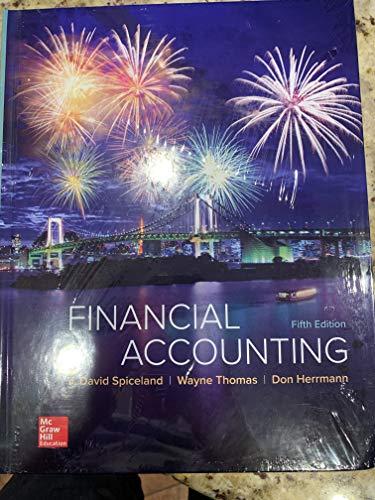
1.
Calculate the given risk ratios of Company B for the year 2018.
1.
Explanation of Solution
Average days to collect accounts receivable (average collection period): This ratio measures the number of times receivables are collected in the period. This ratio analyzes the period receivables are outstanding. So, this ratio also gauges the efficacy of collecting receivables. Lower the ratio, more efficient the collection of receivables.
Inventory turnover: This is the ratio which analyzes the number of times inventory is sold during the period. This ratio gauges the efficacy of inventory management. Larger the ratio, more efficient the inventory management.
Average days to sell inventory (average days in inventory): This ratio analyzes the period from the time inventory is acquired, to the period it is sold, in the period. This ratio measures the period inventory is held with the company. So, this ratio also gauges the efficacy of inventory management. Lower the ratio, more efficient the inventory management.
Acid-test ratio: The financial ratio which evaluates the ability of a company to pay off the instant debt obligations is referred to as quick ratio. Quick assets are cash, marketable securities, and accounts receivables. This ratio assesses the short-term liquidity of a company.
Times interest earned ratio: This financial metric gauges the company’s capability to pay the interest expense during a year. This ratio is also called as coverage ratio because this ratio analyzes the risk of the company to pay interest expense, at times of low earnings.
Calculate the given risk ratios of Company B for the year 2018 as follows:
a. Receivables turnover ratio:
Working Notes:
Calculate the amount of average accounts receivables.
b. Average collection period:
c. Inventory Turnover Ratio:
Working Notes:
Calculate the amount of average accounts receivables.
d. Average days in inventory:
e. Current Ratio:
f. Acid-Test Ratio:
Working note:
Calculate the quick assets:
(3)
g. Debt to equity Ratio
2.
Compute the given profitability ratios of Company B for the year 2018.
2.
Explanation of Solution
Return on Assets (ROA): This financial ratio evaluates a company’s efficiency in operating the assets to generate net income. So, ROA is a tool used to measure the performance of a company.
Profit margin: The percentage of net income generated by every dollar of net sales is referred to as profit margin. This ratio measures the profitability of a company by quantifying the amount of income earned from sales revenue generated after the expenses are paid. The higher the ratio, the more ability to cover operating expenses.
Asset turnover: This ratio analyzes number of times sales or revenue generated from the available assets.
Return on equity (ROE): This financial ratio evaluates a company’s efficiency in using
Compute the given profitability ratios of Company B for the year 2018 as follows:
a. Gross profit ratio:
b. Return on assets:
Working Note:
Determine the amount of average total assets.
c. Profit margin:
d. Asset Turnover
e. Return on equity:
Working Note:
Determine the amount of average stockholders’ equity.
Want to see more full solutions like this?
Chapter 12 Solutions
Financial Accounting
- Company Y reported FIFO ending inventory of $126,500 and a beginning inventory of $119,200 for 2021. Inventory purchases for 2021 were $265,300, and the change in the LIFO reserve for 2020 was an increase in the LIFO reserve of $890. Calculate the value of COGS LIFO for Company Y in 2021.arrow_forwardThe cost formula for the maintenance department of Redwood Manufacturing is $18,500 per month plus $7.25 per machine hour used by the production department. Calculate the maintenance cost that would be budgeted for a month in which 5,400 machine hours are planned to be used.arrow_forwardgeneral accountingarrow_forward

 AccountingAccountingISBN:9781337272094Author:WARREN, Carl S., Reeve, James M., Duchac, Jonathan E.Publisher:Cengage Learning,
AccountingAccountingISBN:9781337272094Author:WARREN, Carl S., Reeve, James M., Duchac, Jonathan E.Publisher:Cengage Learning, Accounting Information SystemsAccountingISBN:9781337619202Author:Hall, James A.Publisher:Cengage Learning,
Accounting Information SystemsAccountingISBN:9781337619202Author:Hall, James A.Publisher:Cengage Learning, Horngren's Cost Accounting: A Managerial Emphasis...AccountingISBN:9780134475585Author:Srikant M. Datar, Madhav V. RajanPublisher:PEARSON
Horngren's Cost Accounting: A Managerial Emphasis...AccountingISBN:9780134475585Author:Srikant M. Datar, Madhav V. RajanPublisher:PEARSON Intermediate AccountingAccountingISBN:9781259722660Author:J. David Spiceland, Mark W. Nelson, Wayne M ThomasPublisher:McGraw-Hill Education
Intermediate AccountingAccountingISBN:9781259722660Author:J. David Spiceland, Mark W. Nelson, Wayne M ThomasPublisher:McGraw-Hill Education Financial and Managerial AccountingAccountingISBN:9781259726705Author:John J Wild, Ken W. Shaw, Barbara Chiappetta Fundamental Accounting PrinciplesPublisher:McGraw-Hill Education
Financial and Managerial AccountingAccountingISBN:9781259726705Author:John J Wild, Ken W. Shaw, Barbara Chiappetta Fundamental Accounting PrinciplesPublisher:McGraw-Hill Education





